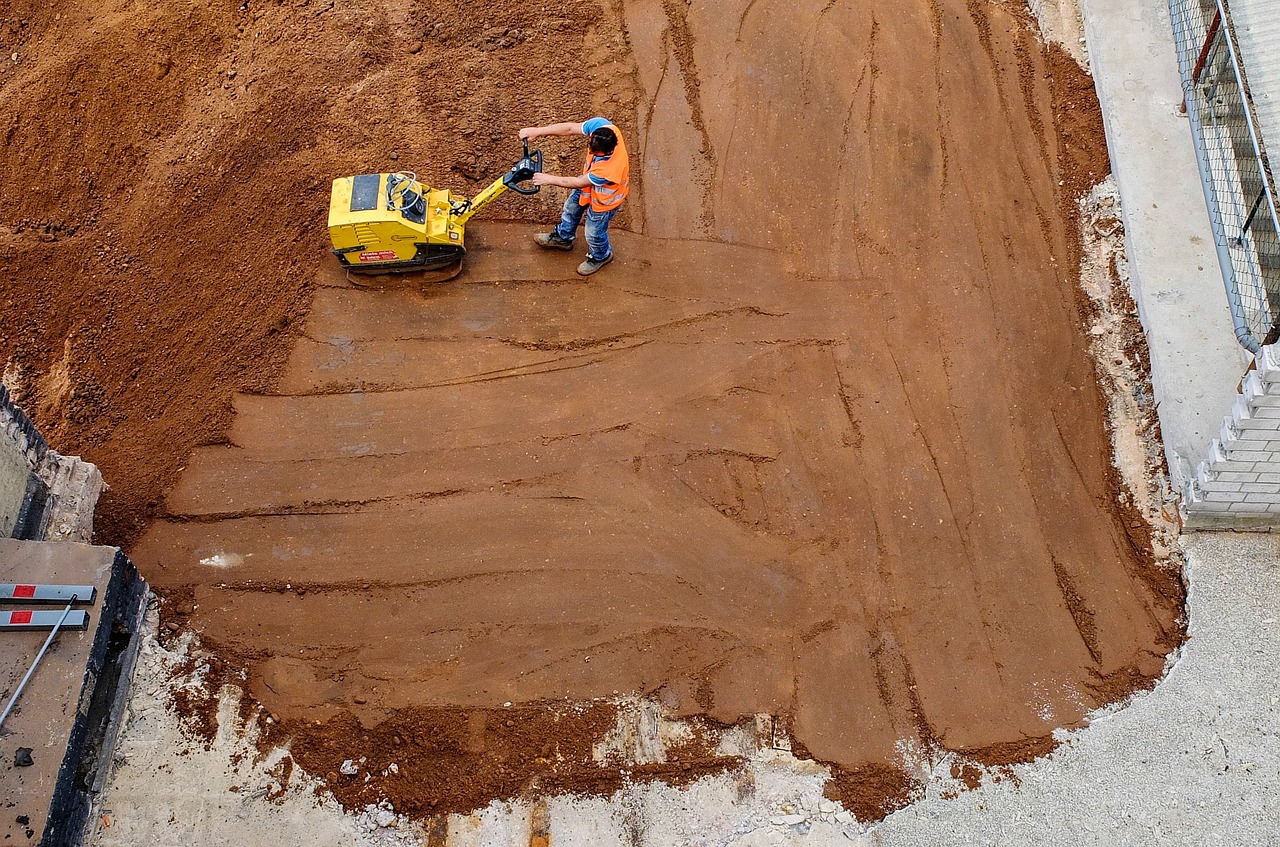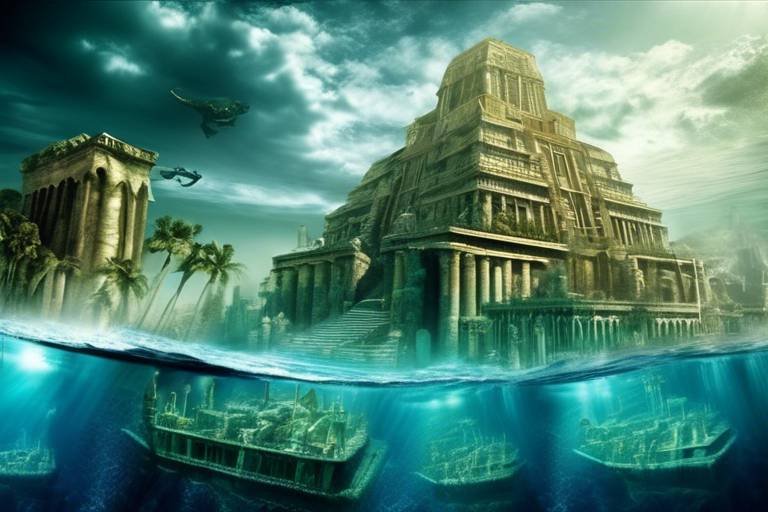The Secrets of the Enigmatic Olmec Heads
Exploring the mysteries and significance of the colossal stone heads created by the ancient Olmec civilization in Mesoamerica, shedding light on their cultural and historical importance.
Uncovering the archaeological findings and historical context surrounding the Olmec heads, including theories on their purpose and creation techniques.
Interpreting the intricate designs and symbols carved into the Olmec heads, delving into the possible meanings and religious significance behind them.
Examining the engineering feats and challenges involved in sculpting and transporting the massive Olmec heads across the ancient landscape.
Exploring the role of the Olmec heads in the religious practices, social hierarchy, and political power structures of the Olmec civilization.
Tracing the enduring impact of the Olmec heads on subsequent Mesoamerican cultures and their representation in contemporary art and media.
Investigating the ongoing research and modern technologies used to unravel the mysteries surrounding the Olmec heads and their creators.
Discussing the challenges and initiatives aimed at protecting and conserving these ancient artifacts for future generations to study and appreciate.
Guiding readers on where to see the Olmec heads in person, highlighting key archaeological sites and museums that showcase these enigmatic sculptures.
Stay tuned for answers to common queries about the enigmatic Olmec heads!

Origin and Discovery
The enigmatic Olmec heads, towering stone sculptures crafted by the ancient Olmec civilization in Mesoamerica, continue to captivate archaeologists and historians with their mysterious origins and significance. These colossal heads, dating back to around 1400-400 BCE, stand as monumental testaments to the artistic and engineering prowess of the Olmec people.
Uncovering the secrets of the Olmec heads begins with their discovery in the 19th century. The first colossal head was unearthed in the 1860s in the Mexican state of Veracruz, shedding light on the existence of this enigmatic civilization. Since then, more than a dozen of these massive sculptures have been found, each presenting a unique glimpse into the Olmec world.
Archaeologists have put forth various theories regarding the purpose of the Olmec heads. Some suggest that they served as portraits of powerful rulers or deities, while others propose that they functioned as markers of sacred sites or ceremonial centers. The intricate details carved into the stone heads reveal advanced sculpting techniques and a deep understanding of symbolism.
The Olmec heads are not mere statues; they are embodiments of cultural and historical significance. These colossal sculptures symbolize the Olmec civilization's artistic achievements and religious beliefs, offering valuable insights into their worldview and societal structures. The colossal heads are not only artistic marvels but also windows into a bygone era.
Examining the monumental construction of the Olmec heads unveils the remarkable engineering skills possessed by the ancient Olmec people. Carved from basalt boulders weighing several tons, these colossal sculptures were transported over long distances using primitive tools and techniques. The sheer size and weight of the Olmec heads present a testament to the ingenuity and labor invested in their creation.
The Olmec heads played a pivotal role in the religious practices and social hierarchy of the Olmec civilization. These monumental sculptures were likely revered as sacred symbols of power and authority, serving as focal points for rituals and ceremonies. The presence of the Olmec heads in key archaeological sites suggests their central role in the spiritual and political life of the Olmec people.
The enduring legacy of the Olmec heads extends beyond the boundaries of the ancient civilization. Their influence can be seen in subsequent Mesoamerican cultures, where echoes of Olmec iconography and symbolism persist. Contemporary art and media continue to draw inspiration from these enigmatic sculptures, highlighting their lasting impact on artistic expression and cultural identity.
Deciphering the enigma of the Olmec heads requires a multidisciplinary approach, combining archaeological research, scientific analysis, and technological advancements. Modern tools such as 3D scanning and digital imaging have enabled researchers to uncover hidden details and unravel the mysteries surrounding these ancient artifacts. Ongoing studies aim to shed light on the origins and meanings behind the Olmec heads, offering new perspectives on the enigmatic civilization that created them.
Preserving the Olmec heads for future generations is crucial to safeguarding this invaluable heritage. Conservation efforts face challenges such as environmental degradation, looting, and vandalism, underscoring the need for proactive measures to protect these ancient sculptures. Initiatives aimed at safeguarding the Olmec heads involve collaboration between archaeologists, governments, and local communities to ensure their long-term preservation and accessibility for study and appreciation.
For those intrigued by the mysteries of the Olmec heads, visiting key archaeological sites and museums offers a firsthand glimpse into these enigmatic sculptures. Sites such as La Venta in Mexico and the Museum of Anthropology in Xalapa showcase some of the most iconic Olmec heads, providing visitors with a tangible connection to the ancient civilization that created these colossal masterpieces. Exploring these sites allows enthusiasts to immerse themselves in the rich history and cultural significance of the Olmec heads, unraveling the secrets of a civilization lost to time.

Symbolism and Iconography
The Olmec heads, with their imposing size and intricate carvings, are steeped in symbolism and iconography that offer a glimpse into the beliefs and culture of the ancient Olmec civilization. These colossal stone sculptures, often depicting powerful rulers or deities, serve as a visual language communicating the spiritual and societal values of the Olmec people.
One of the most prominent symbols found on the Olmec heads is the headdress, which varies in design and likely signifies the status or role of the individual portrayed. Some headdresses feature elaborate motifs, possibly representing specific gods or mythological beings revered by the Olmec society.
The facial features of the Olmec heads also hold significant meaning, with distinctive traits such as elongated heads or prominent facial expressions believed to convey messages about identity, power, or lineage. These features may serve as visual metaphors, conveying spiritual or ancestral connections revered by the Olmec people.
Moreover, the iconography carved into the Olmec heads includes symbols like serpents, jaguars, and other animals that hold religious importance in Mesoamerican cultures. These symbols are thought to represent cosmic forces, deities, or mythological narratives that were central to the spiritual beliefs of the Olmec civilization.
Interpreting the symbolism and iconography of the Olmec heads requires a deep understanding of Mesoamerican mythology and religious practices, as well as a recognition of the artistic skill and cultural significance embedded in these enigmatic sculptures.

Monumental Construction
The monumental construction of the Olmec heads stands as a testament to the incredible craftsmanship and engineering prowess of the ancient Olmec civilization. These colossal stone heads, weighing several tons each, were meticulously carved from basalt boulders using primitive tools such as stone chisels and hammers. The process of sculpting these massive sculptures required immense skill and precision, as the Olmec artisans intricately detailed the facial features and headdresses of the heads.
Transporting these monumental sculptures from the quarries where they were carved to their final resting places posed a significant challenge for the Olmec people. Scholars believe that the Olmec likely used a combination of log rollers, sledges, and manpower to move the massive stone heads across vast distances. The sheer size and weight of these sculptures indicate the level of organization and labor required to accomplish such a monumental task.
The placement of the Olmec heads in prominent locations within ceremonial centers and public spaces highlights their importance in Olmec society. These monumental sculptures were not only symbols of power and authority but also served as focal points for religious rituals and communal gatherings. The strategic positioning of the heads within the urban landscape suggests a deliberate effort to communicate the cultural and spiritual significance of the Olmec civilization to its inhabitants.
Examining the construction techniques and artistic details of the Olmec heads provides valuable insights into the technological advancements and cultural achievements of this ancient civilization. The monumental nature of these sculptures continues to captivate archaeologists and art historians, shedding light on the sophisticated craftsmanship and artistic vision of the Olmec people.

Cultural Significance
The Olmec heads hold immense cultural significance within the ancient Olmec civilization, serving as powerful symbols of religious beliefs, social hierarchy, and political power structures. These colossal stone sculptures were not merely artistic creations but played a vital role in the spiritual practices and rituals of the Olmec people. Carved with precision and adorned with intricate designs, the heads were likely used in ceremonies and ceremonies, possibly representing deities or revered ancestors.
Moreover, the presence of the Olmec heads in various locations across the Olmec heartland suggests their importance in marking sacred sites or serving as markers of territorial boundaries. The sheer size and artistic craftsmanship of these monumental sculptures indicate the reverence and awe in which they were held by the Olmec society, reflecting a sophisticated understanding of art and spirituality.
Furthermore, the placement of the Olmec heads in prominent locations within ceremonial centers and elite complexes highlights their role in reinforcing the social hierarchy and legitimizing the authority of rulers. These iconic sculptures were not only symbols of power but also served as embodiments of cultural identity and heritage, connecting the Olmec people to their ancestors and traditions.

Legacy and Influence
When it comes to the enigmatic Olmec heads, their legacy and influence extend far beyond the ancient civilization that created them. These colossal stone sculptures, with their imposing presence and intricate details, have left a lasting impact on Mesoamerican cultures that followed in the footsteps of the Olmecs.
The Olmec heads, believed to represent powerful rulers or deities, have served as symbols of authority and prestige, influencing the art and iconography of subsequent civilizations such as the Maya and Aztecs. The monumental construction and artistic craftsmanship displayed in these sculptures have inspired awe and admiration for centuries.
Moreover, the enigmatic nature of the Olmec heads continues to captivate researchers, archaeologists, and artists alike, sparking curiosity and speculation about the ancient civilization that created them. The enduring mystery surrounding the purpose and significance of these colossal stone heads fuels ongoing investigations and interpretations.
Contemporary art and media have also been influenced by the enigmatic allure of the Olmec heads, with representations of these iconic sculptures appearing in various forms, from paintings to sculptures, paying homage to their cultural and historical significance. The legacy of the Olmec heads lives on in the artistic expressions of today, connecting modern audiences to the ancient world of Mesoamerica.

Deciphering the Enigma
Deciphering the Enigma surrounding the enigmatic Olmec heads is no easy task. Researchers and archaeologists have been tirelessly working to unlock the secrets held within these colossal stone sculptures. Utilizing modern technologies such as 3D scanning and digital mapping, experts aim to unravel the mysteries of how the Olmec heads were created and what they symbolize. By studying the intricate details and carvings on the heads, scholars hope to gain deeper insights into the religious beliefs and cultural practices of the ancient Olmec civilization.
One of the key challenges in deciphering the enigma of the Olmec heads lies in understanding the context in which they were created. The Olmec civilization, often regarded as the "Mother Culture" of Mesoamerica, left behind a legacy shrouded in mystery. By piecing together fragments of historical records and archaeological evidence, researchers aim to reconstruct the narrative of the Olmec people and their significance in the broader Mesoamerican cultural landscape.
Through collaborative efforts and interdisciplinary research, the enigma of the Olmec heads slowly begins to unravel. By combining expertise in archaeology, anthropology, geology, and art history, scholars work towards a comprehensive understanding of these iconic sculptures. Each new discovery and revelation brings us closer to unlocking the secrets that have puzzled historians and enthusiasts for centuries.
As we delve deeper into the world of the Olmec heads, we are confronted with a tapestry of symbols and motifs that hint at a complex cosmology and belief system. The enigmatic expressions and features of the heads challenge us to rethink our assumptions about ancient civilizations and the depths of their knowledge. Deciphering the enigma of the Olmec heads is not just a quest for knowledge but a journey into the heart of a culture that continues to captivate and intrigue us to this day.

Preservation Efforts
Preserving the enigmatic Olmec heads is a monumental task that requires careful planning and dedication. Due to their immense size and weight, these ancient artifacts are susceptible to environmental damage and deterioration over time. Conservation efforts focus on protecting the Olmec heads from natural elements such as humidity, temperature fluctuations, and erosion.
One of the key preservation strategies involves creating protective shelters or enclosures around the Olmec heads to shield them from rain, sunlight, and other external factors. These structures help maintain a stable environment around the sculptures, preventing rapid deterioration and ensuring their longevity.
In addition to physical protection, conservationists employ advanced techniques such as chemical stabilization and structural reinforcement to strengthen the integrity of the stone heads. By carefully monitoring the condition of the artifacts and implementing preventive measures, experts aim to safeguard the Olmec heads for future generations.
Collaborative efforts between archaeologists, conservation specialists, and local communities play a crucial role in preserving the Olmec heads. Educational programs and outreach initiatives raise awareness about the significance of these ancient sculptures and the importance of preserving cultural heritage.
Furthermore, ongoing research into innovative conservation methods and materials continues to advance the field of heritage preservation. By staying at the forefront of technological developments, experts strive to enhance the long-term protection of the Olmec heads and other valuable archaeological treasures.

Visiting Olmec Head Sites
When embarking on a journey to explore the enigmatic Olmec heads, one must be prepared to delve into the heart of Mesoamerica's ancient wonders. These colossal stone sculptures, shrouded in mystery and history, can be found at various archaeological sites and museums, offering a glimpse into the rich cultural tapestry of the Olmec civilization.
One of the most renowned sites to witness the grandeur of the Olmec heads is La Venta, located in present-day Mexico. Here, visitors can marvel at the sheer size and intricate details of these monumental sculptures, each bearing the weight of centuries of stories and secrets.
For those seeking a more immersive experience, a visit to the Parque-Museo La Venta in Villahermosa provides a comprehensive insight into the Olmec culture and the significance of these iconic heads. The museum's curated displays offer a deeper understanding of the archaeological significance and artistic mastery behind the Olmec heads.
Additionally, the El Azuzul site in Tabasco is another must-visit destination for enthusiasts of ancient civilizations. Here, amidst the lush greenery of the region, visitors can witness the enigmatic allure of the Olmec heads in a serene and natural setting, connecting with the spiritual essence of these monumental sculptures.
Exploring these sacred sites not only offers a glimpse into the past but also serves as a reminder of the enduring legacy of the Olmec civilization. The enigmatic Olmec heads stand as silent sentinels, guarding the secrets of a bygone era and inviting modern-day adventurers to unravel their mysteries.
Frequently Asked Questions
- What is the significance of the Olmec heads?
The Olmec heads are monumental stone sculptures created by the ancient Olmec civilization in Mesoamerica. They are believed to have served important religious and political purposes, representing powerful individuals or deities in Olmec society.
- How were the Olmec heads constructed?
The Olmec heads were sculpted from large basalt boulders using primitive tools and techniques. The precision and scale of these sculptures showcase the advanced engineering skills of the Olmec people, who were able to transport these massive heads over long distances.
- What do the symbols on the Olmec heads mean?
The intricate designs and symbols carved into the Olmec heads are still subject to interpretation by archaeologists and historians. These symbols likely held religious and cultural significance, possibly representing aspects of Olmec mythology and belief systems.
- Why are the Olmec heads important today?
The Olmec heads continue to intrigue and inspire researchers, artists, and the general public due to their enigmatic nature and historical significance. They provide valuable insights into the early Mesoamerican civilizations and their artistic and cultural achievements.
- Where can I see the Olmec heads?
Several Olmec head sculptures are on display at various archaeological sites and museums in Mexico, such as La Venta and Villahermosa. These sites offer visitors the opportunity to witness these impressive artifacts up close and learn more about the Olmec civilization.



















